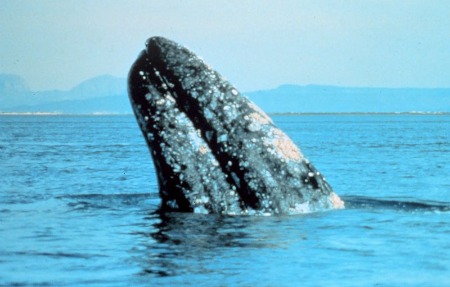Gray Whale Population Up to 5 Times Larger Before Whaling, Study Finds

The population of eastern Pacific gray whales shows a huge dip at the same point that whaling increased in the early 20th century, a new analysis of acient whale genes shows.
Eastern Pacific gray whales are a subspecies of grey whale that lives in the Pacific Ocean, migrating from the Arctic to Mexico yearly. Their population is currently estimated to be around 20,000. They are up to 46 feet (14 meters) long and weigh up to 99,000 pounds (45,000 kilograms).
While scientists have known that commercial whaling decreased whale populations, the specifics of the population prior to whaling has been uncertain. To get a better understanding of the pre-whaling numbers for one subspecies of gray whale, the researchers used DNA samples from the bones of eastern Pacific gray whales that lived between 150 and 2,500 years ago and compared the results with the genomes of modern whales.
"In this case, we were able to look at pre-whaling specimens of gray whales, and found that the genetic data are consistent with a sharp and recent bottleneck — very likely the result of commercial whaling," study researcher Elizabeth Alter, of City University of New York, York College, said in a statement.
They saw that the older whales, from before the advent of commercial whaling, had much more variation within their genomes than today's whales. This means that at the time, the whale population was much larger.
This genetic data on those whales suggests their population used to be much larger than their current numbers, probably around 78,000 to 116,000. These estimates were at odds with historical records of whale populations, the researchers said, which had suggested that there were somewhere between 15,000 and 35,500 whales at that time.
Their new study supports the previous genetic work, which focused on only current whale populations and suggested their numbers were much larger even as little as 200 years ago.
Get the world’s most fascinating discoveries delivered straight to your inbox.
"Retrieving DNA from ancient whales allows more direct insights into their population histories than using modern DNA alone," Alter said. "As methods for retrieval and analysis of ancient DNA improve, we'll be able to increasingly refine population histories for heavily exploited species like whales."
The results were published May 9 in the journal PLoS ONE.
You can follow LiveScience staff writer Jennifer Welsh on Twitter, on Google+ or on Facebook. Follow LiveScience for the latest in science news and discoveries on Twitter and on Facebook.
Jennifer Welsh is a Connecticut-based science writer and editor and a regular contributor to Live Science. She also has several years of bench work in cancer research and anti-viral drug discovery under her belt. She has previously written for Science News, VerywellHealth, The Scientist, Discover Magazine, WIRED Science, and Business Insider.



